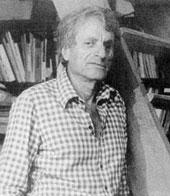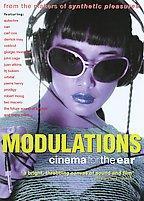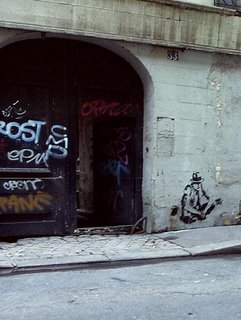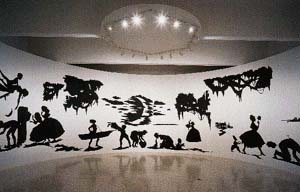 Stan Brakhage
Stan Brakhage (1933 - 2003) is regarded as one of the most important American filmmakers of the 20th century.
Brakhage was born as Robert Sanders in an orphanage in Kansas City, Missouri. Three weeks after his birth, he was adopted by Ludwig and Clara Brakhage, and he was given the name James Stanley Brakhage.
As a child, he appeared on radio as a boy soprano before going to high school and then dropping out of Dartmouth College after several months to make films. He was influenced by the writings of Sergei Eisenstein and the films of Jean Cocteau as well as the Italian neorealism movement.
In 1953, Brakhage moved to San Francisco where he associated with poets such as Robert Duncan and Kenneth Rexroth. In late 1954, he moved to New York City where he associated with a number of contemporary artists, such as abstract expressionist painters and beat generation poets, among them Maya Deren, Marie Menken, Joseph Cornell and John Cage.
In a time, 1950s, when film id rooted in Hollywood cinema and large productions Stanley Brakhage made his films by himself and one camera. Brakhage's films are usually silent and lack a traditional story, being more analogous to visual poetry than to prose story-telling. He often referred to them as "visual music." His films range in length from just a few seconds to several hours, but most last between two or three minutes and one hour. For him the film itself was also a material. Most of his work was done in 8 mm or 16 mm film, and he frequently hand-painted the film or scratched the image directly into the film emulsion, baked the film in the owen and sometimes used collage techniques. For Mo nthlight(1963), for example, he stuck moth wings, twigs, and leaves onto tape and made prints from it. He called his style as "closed eye vision" in which painting and cinema work in a totally different way.
nthlight(1963), for example, he stuck moth wings, twigs, and leaves onto tape and made prints from it. He called his style as "closed eye vision" in which painting and cinema work in a totally different way.
Brakhage's work covers a variety of subjects and techniques. Window Water Baby Moving (1959) is a record of the birth of his first child, while 23rd Psalm Branch (1966-67) is a meditation on war that intercuts footage of Colorado, where he lived, with shots of World War II. Dog Star Man (1961-64), perhaps his most famous work, features a man climbing a mountain, shots of stellar objects and more footage of his wife giving birth. It is usually read as addressing the unity of creation. Works from his later periods include the four-part "Faust Series" (1987-89), the four-part "Visions in Meditation" (1989-90), "Passage Through: A Ritual" (1991), and "The Vancouver Island Quartet" (1991-2002). He also completed several more collaborations with musicians, including two more works with music by James Tenney, "Christ Mass Sex Dance" (1991), and "Ellipses #5" (1998). For Marilyn, which was made in 1992 was about his wife and her embodying his concept of God.
Brakhage wrote a number of books, including Metaphors on Vision (1963) and the posthumously published "Telling Time: Essays of a Visionary Filmmaker" (2003). H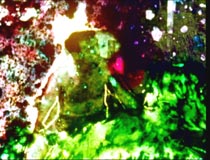 e often gave lectures at universities, museums, galleries, film festivals and so on.
e often gave lectures at universities, museums, galleries, film festivals and so on.
It is believed that the coal-tar dyes he used to paint his films contributed to the cancer.
His work has had some small impact on contemporary art, music videos, mainstream cinema. The credits of the film Seven, with their scratched emulsion, rapid cutaways and bursts of light are very much in Brakhage's style.
Stanley Brakhage: a short information by Fred Camper
Barry McGee
A lauded and much-respected cult figure in a bi-coastal subculture that comprises skaters, graffiti artists, and West Coast surfers, Barry McGee was born in 1966 in California, where he continues to live and work. In 1991 he receiv ed a BFA in painting and printmaking from the San Francisco Art Institute. His drawings, paintings, and mixed-media installations take their inspiration from contemporary urban culture, incorporating elements such as empty liquor bottles and spray-paint cans, tagged signs, wrenches, and scrap wood or metal. McGee is also a graffiti artist, working on the streets of America’s cities since the 1980s, where he is known by the tag name “Twist.” He views graffiti as a vital method of communication, one that keeps him in touch with a larger, more diverse audience than can be reached through the traditional spaces of a gallery or museum. His trademark icon, a caricatured male figure with sagging eyes and a bemused expression, recalls the homeless people and transients who call the streets their home. “Compelling art to me is a name carved into a tree,” says McGee. His work has been shown at the Walker Art Center in Minneapolis, the San Francisco Museum of Modern Art, the UCLA/Armand Hammer Museum in Los Angeles, and on streets and trains all over the United States. He and his daughter, Asha, live in San Francisco.
Matthew Ritchie was born in London, England in 1964, and lives and  works in New York. He received a BFA from Camberwell School of Art, London, and attended Boston University. His artistic mission has been no less ambitious than an attempt to represent the entire universe and the structures of knowledge and belief that we use to understand and visualize it. Ritchie’s encyclopedic project (continually expanding and evolving like the universe itself) stems from his imagination, and is catalogued in a conceptual chart replete with allusions drawn from Judaeo-Christian religion, occult pract
works in New York. He received a BFA from Camberwell School of Art, London, and attended Boston University. His artistic mission has been no less ambitious than an attempt to represent the entire universe and the structures of knowledge and belief that we use to understand and visualize it. Ritchie’s encyclopedic project (continually expanding and evolving like the universe itself) stems from his imagination, and is catalogued in a conceptual chart replete with allusions drawn from Judaeo-Christian religion, occult pract
ices, Gnostic traditions, and scientific elements and principles. Ritchie’s paintings, installations, and narrative threads delineate the universe’s formation as well as the attempts and limits of human consciousness to comprehend its vastness. Ritchie’s work deals explicitly with the idea of information being ‘on the surface’, and information is also the subject of his work. Although often described as a painter, Ritchie creates works on paper, prints, light-box drawings, floor-to-wall installations, freestanding sculpture, web sites, and short stories which tie his sprawling works together into a narrative structure. Drawing is central to his work, he doesn't think that there are boundries between drawing, sculpture and computer games, though. He perceives it as information. He scans his drawings into the computer so that images can be blown up, taken apart, made smaller or three-dimensional, re-shaped, transformed into digital games, or given to someone else to execute. One ongoing work that Ritchie calls an endless drawing contains everything he has drawn before. Ritchie’s work has been shown in one-person exhibitions at the Dallas Museum of Art; Contemporary Arts Museum, Houston; MASS MoCA; SFMoMA; and the Museum of Contemporary Art, Miami, among others. His work was also exhibited at the Whitney Biennial (1997), Sydney Biennale (2002), and São Paulo Bienale (2004).
An interview by Owen Drolet

